Improved Motors for Engineers

Introduction
Motors. They’re often seen as a large cylindrical object mounted somewhere on a piece of machinery. They may not be heard, but the results are certainly apparent when the ‘on’ button is depressed and the machine rumbles into life. I suspect most users give them very little thought (except when they break down) so it might be of some interest to look a little more closely at the motors used in some Axminster machinery.
Engineering Lathes
Axminster stock a range of engineering lathes from the diminutive, hobby rated Model Engineer Series C0 to a full sized, heavy duty machine suitable for the engineering or production workshop. Between these two, there’s a range of lathes to suit every application and several of them have the prefix ‘S’ which indicates that they’re powered by a sophisticated, brushless motor.
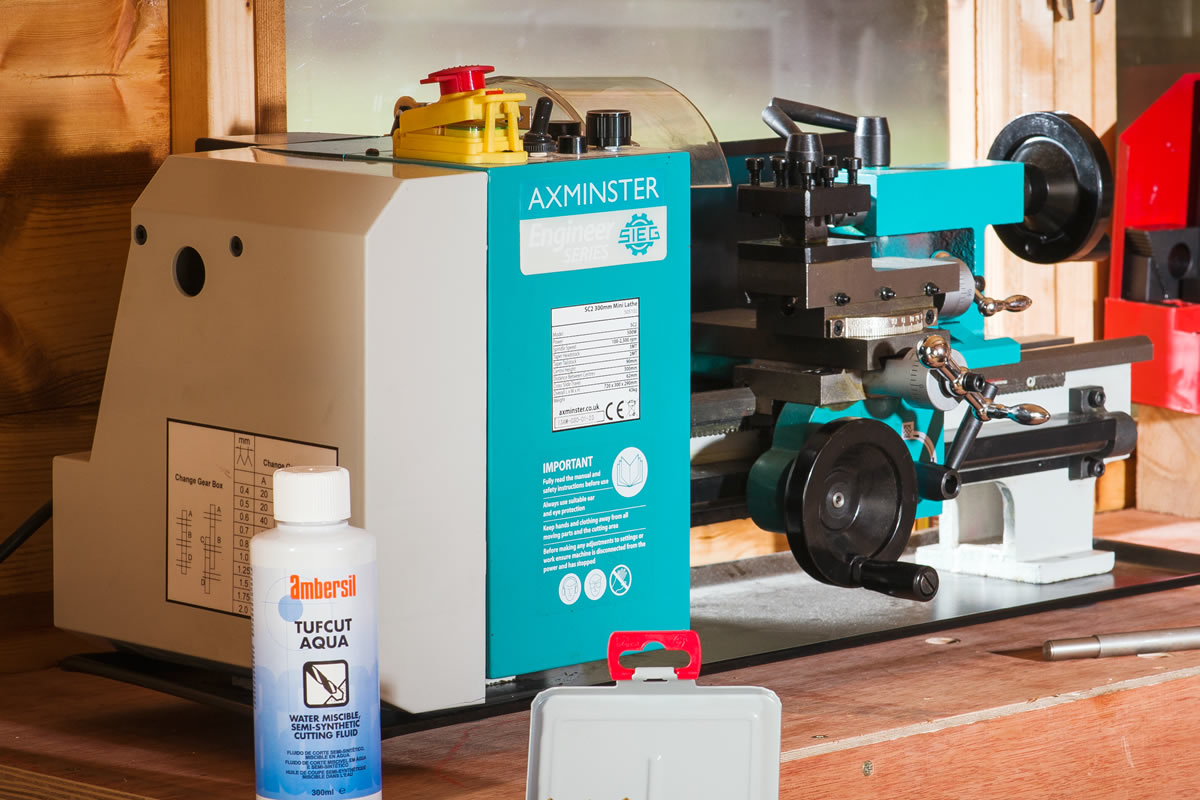
HiTorque Motors
Most equipment contains a motor with a pair of carbon brushes, through which the electricity flows to the armature, in turn providing the rotary motion to power the machine. Sustained heavy loading in a brushed motor may result in unstable performance, shortened service life and even motor failure.
The first difference between brush and HiTorque motors is that the latter doesn’t rely on carbon brushes; instead the motor is brushless and is connected to an AC/DC convertor and it’s this which controls the motor speed by altering the input voltage and wave form.
There are also several other advantages in using these motors. Firstly, they run almost silently and secondly, there’s very little heat generated.
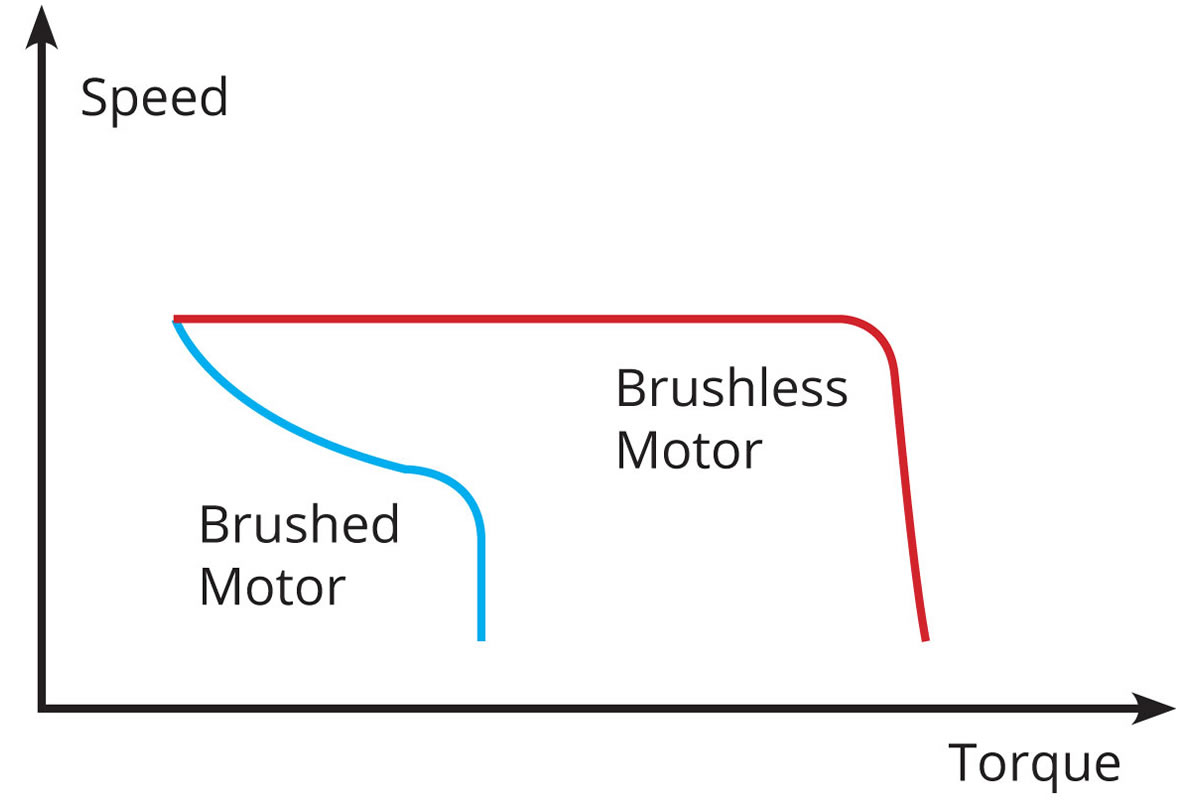
As a consequence, under load, there’s no drop in torque, even down to almost zero rpm; it remains constant. Also, as there are no windings on the armature, there are no centrifugal forces to shorten the motor’s life. Another benefit is that the motors are sealed against dirt and contamination.
Finally, such is the effectiveness of brushless motors, they are well over 80% efficient.
Benefits
The use of a HiTorque brushless dc motor in a lathe presents several advantages which might not be immediately obvious. There are no belts or gears to change, the motor speed can be regulated from a clear digital panel on the front of the machine and there’s a very high degree of precise control. The forward and reverse functions on the lathe are almost instantaneous and easy to control which is a great advantage when tapping a thread.
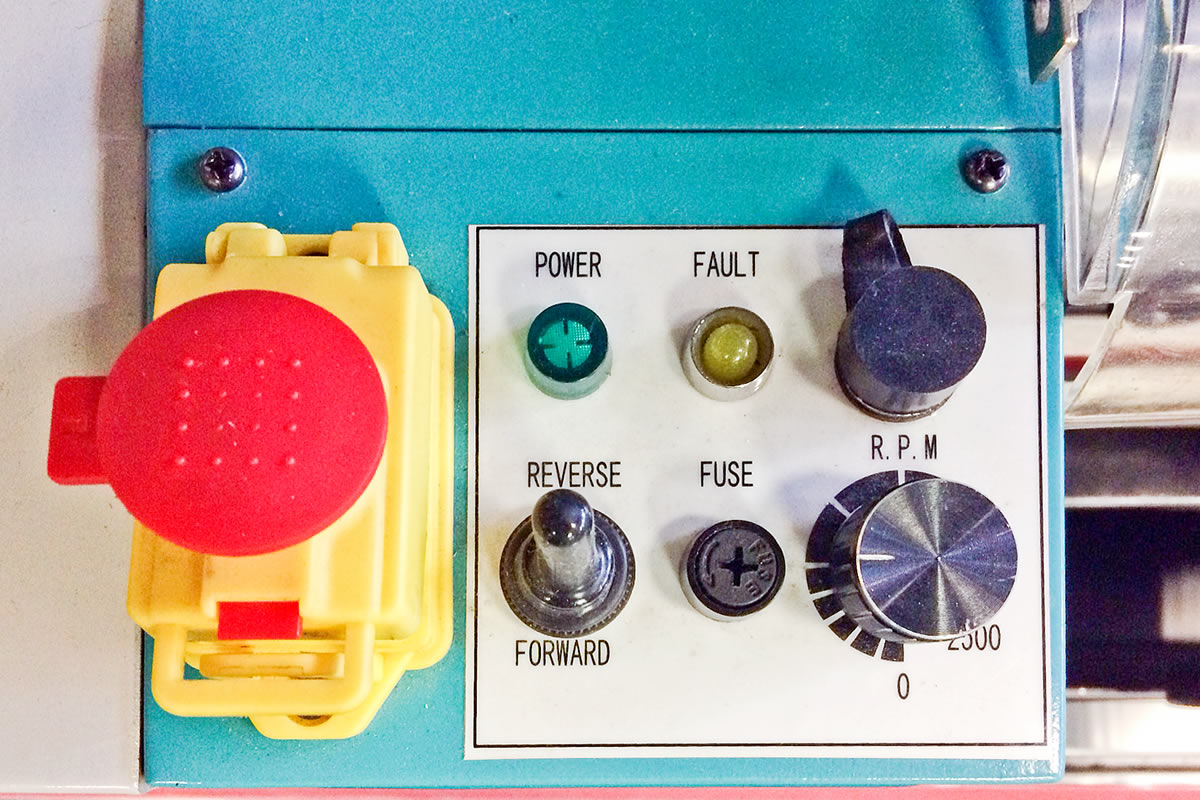
Practical Example
Consider two lathes in the following comparative test, the Model Engineer Series C2 and the almost identical SC2. The C2 has a 250W brush motor and the SC2 is 500W brushless. Both use the same lathe tool and with the same motor to spindle gear ratio resulting in a spindle speed of 450rpm.
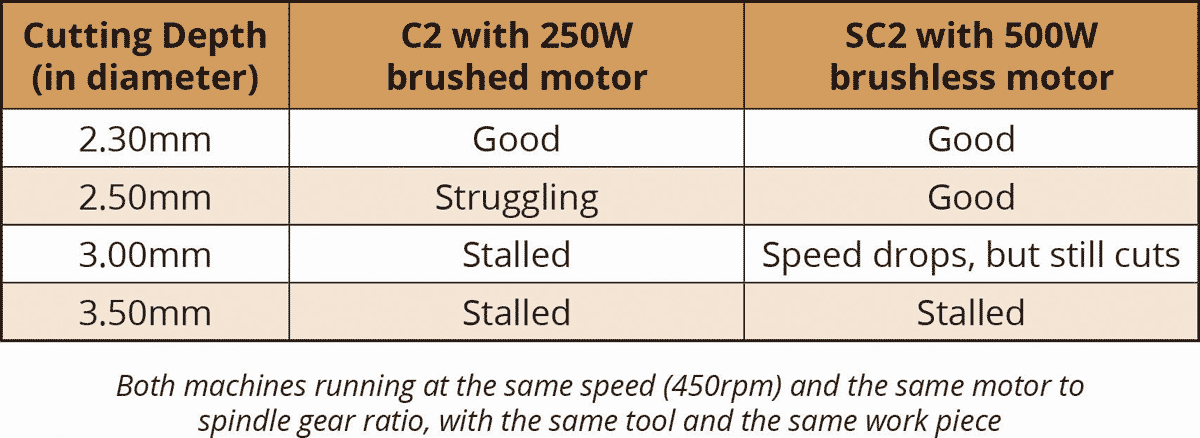
The results of this test show conclusively that the brushless motor is capable of working effectively under a greater load than the conventional brushed motor. Lathes and other engineering equipment which use HiTorque brushless motors are around 15% more expensive but they offer the advantage of considerably enhanced operational convenience.
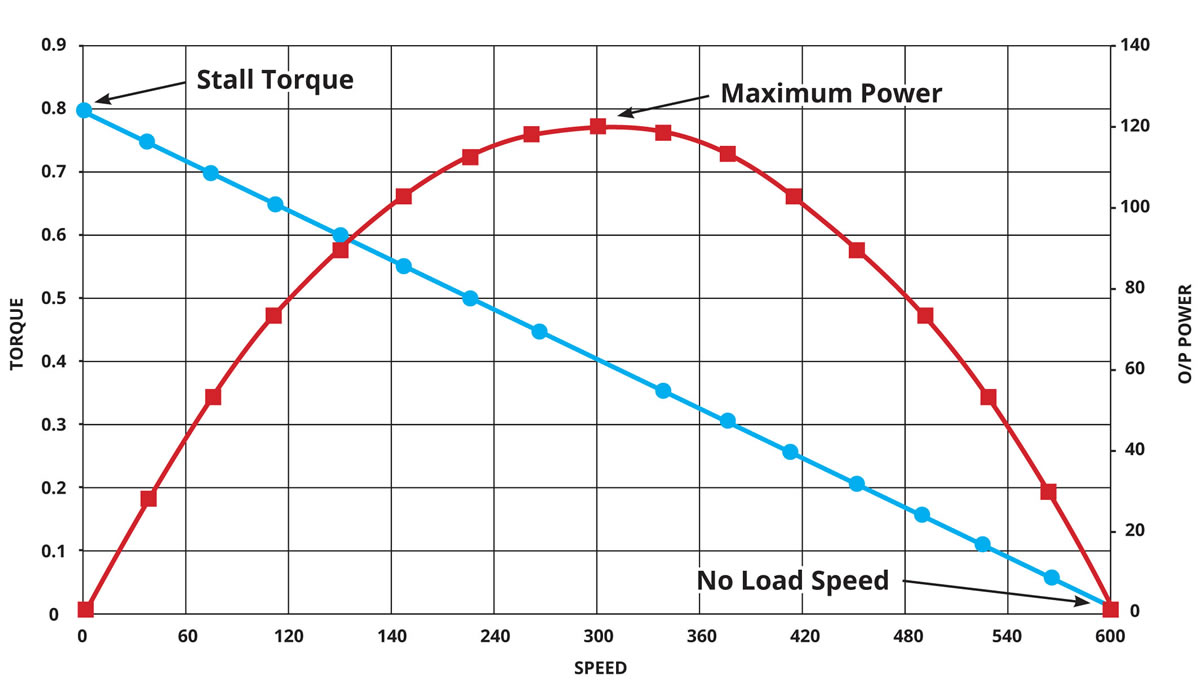
This graph shows that at low speeds the torque is excellent so that it can generate the required output to turn the load. Once the speed comes up torque does not need to be so high for the power output to remain, which is why torque goes down on a slight incline.



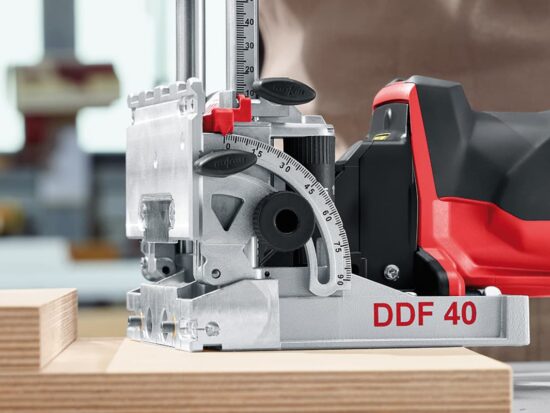
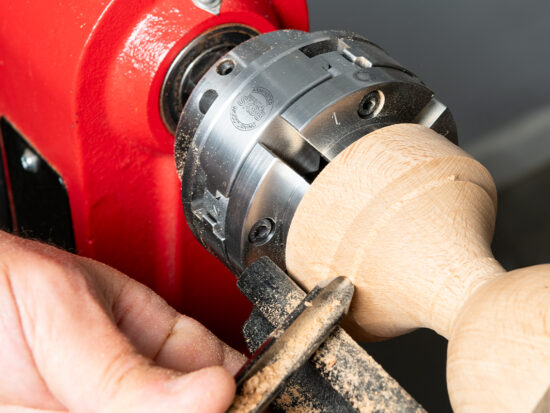
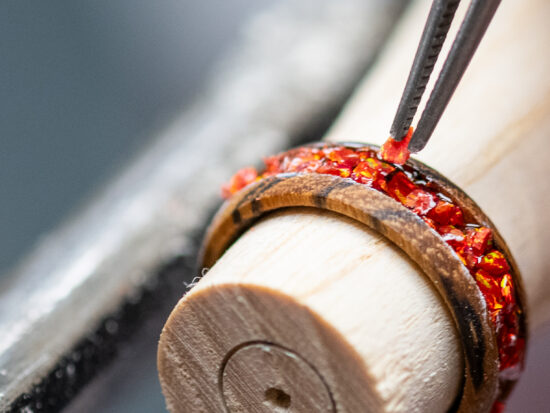
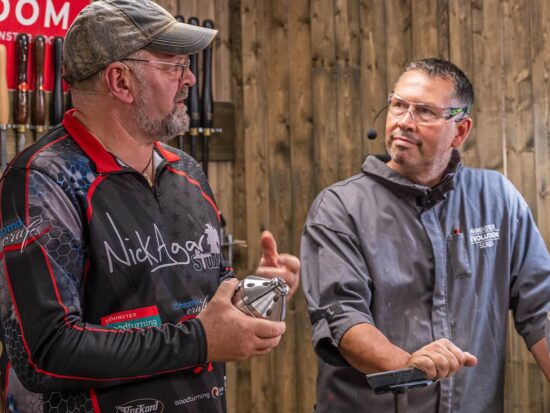
This started off interesting but at the point where you are comparing a 250W motor to a 500W motor to try and explain the advantages of brushless motors, the whole article becomes pointless and misleading.
These are NOT DC motors. They are 3 phase induction motors driven by an inverter.
Unfortunately in the first graph the speed and torque labels should be swapped to make sense. The characteristics of these motors are relatively constant torque up to a certain speed and then the torque drops off. I would agree in general the brushless motors are a better solution with a reduced need for maintenance but either solution will work. The performance depends on the quality of the motor and the electronic controller. Obviously a 250W motor will stall sooner than 500W motor.